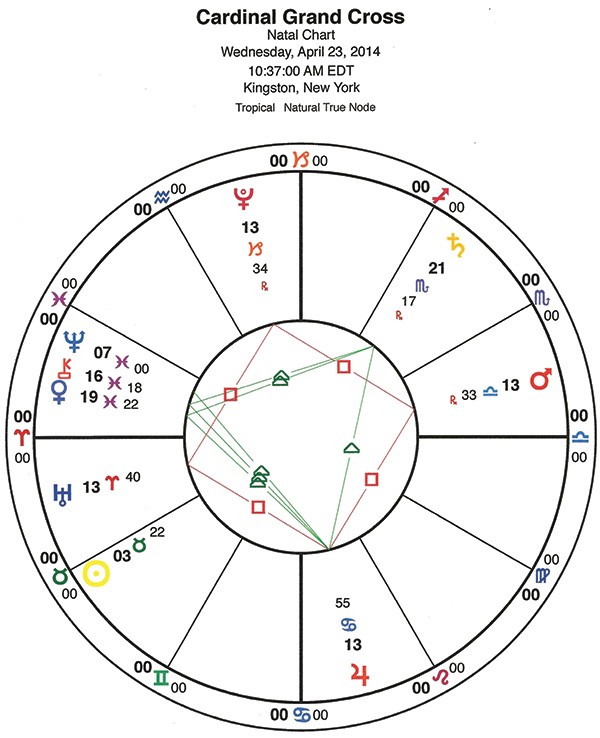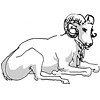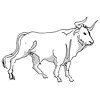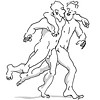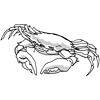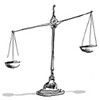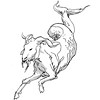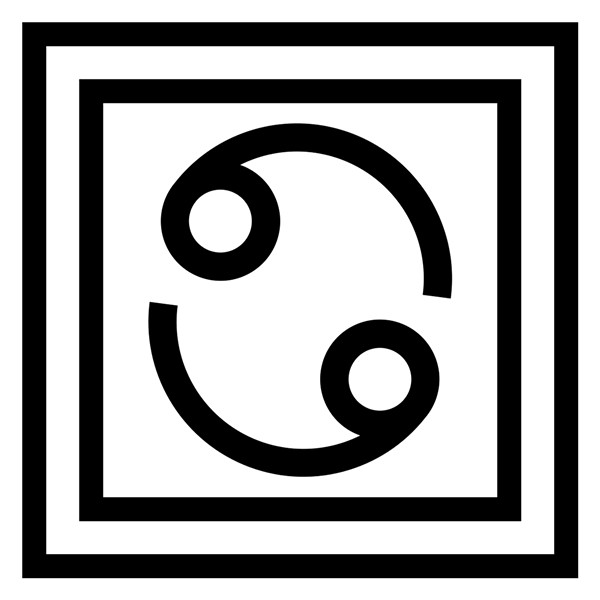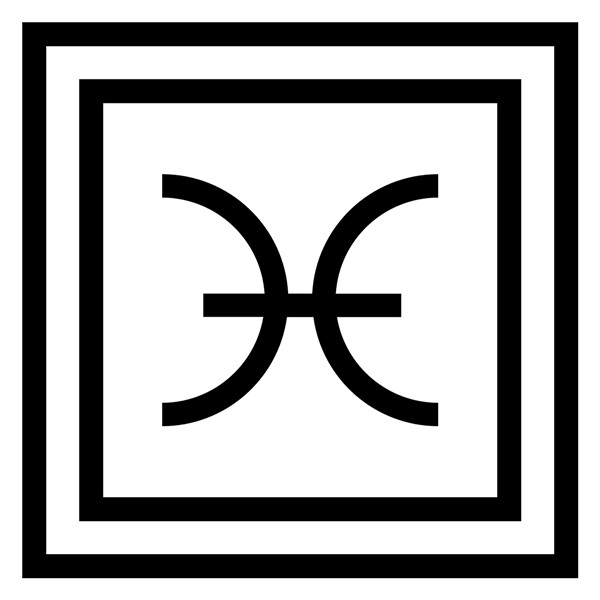April 2014 is the month of the long-anticipated cardinal grand cross—what I have called the peak astrology of the 2012 era. The aspect pattern that's exact on April 23 has been forming for many decades, a hologram swirling in the seemingly random movements of the cosmos awaiting its moment of emergence. That is about to arrive with both deeply personal themes and vast global ones.
They share a common thread, and that is trust.
I know it's not easy for nonastrologers to take too much technical explanation of a chart, but the meaning, beauty and outstanding quality of this alignment would lose much of its impact if you didn't really have a sense of what it actually is. Plus, if you know, you can then explain it to others. I've included a custom illustration and I will do my best to explain it so that anyone can follow. I've placed a chart in the middle of the page and I'll put the instructions for where to look in the chart [in bold and in brackets].
With just a little focus and patience, I think that the chart image will emerge.
A grand cross (sometimes called a grand square) consists of planets at four equidistant points of the zodiac, which locates the Earth at the center as if in a crosshairs. The Earth is not shown in an astrological chart; it's presumed to be in the middle of the wheel. Such patterns lose or gain astrological importance, power or influence (as you prefer), based on what planets are involved, how quickly or slowly they move, where the cross is aligned within the zodiac—plus any unusual factors that might be involved. By all of those measures, this grand cross gets high scores.
The four points of the cross fall close to the cardinal points, those associated with the "four directions." The four points involved all have the bold number 13 next to them, which is their degree location within their respective signs. Planets with the same degree number are said to be "in aspect." This aspect is a giant square. [The square is easy to see by following the red lines in the middle of the chart.]
The cardinal points are associated with peaks and balancing moments of the Sun's energy as the seasons change (the equinoxes and the solstices). Two of the planets involved consist of an aspect I've been writing about here for years, called the Uranus-Pluto square. That is a 90-degree meeting of two very slow-moving planets whose current cycle began with the conjunction of 1965-1966, rippling out for years on either side—the whole business we refer to as The Sixties.
First let's look at the Uranus-Pluto square. Uranus is now in Aries [a blue H-like thing, toward the left, below the horizontal line]. When you think of Uranus in Aries, think of radical individualism that can express itself creatively, or get lost in the glamour of technology. Think revolution that can set people free or get caught up in self-aggrandizement. Think scientific innovation that can serve negative or positive interests for the community. Consider the ways that our culture is becoming the product of its own technology—which means that the technology is out of our control.
The second part of the Uranus-Pluto square is Pluto. Pluto is now in Capricorn [depicted as a red golf tee, to the upper left of the chart]. When you think of Pluto in Cap, think of systems breakdowns and the collapse of overlarge, too-old institutions. Think of the banking crisis. Think of struggles for and obsession with power, doing it "because you can," and the constant sensation that this all may be crashing down.
With Pluto in Capricorn, the evolutionary drive of Pluto is being applied to "the system" itself. This has been a long time coming. "The system" may seem indomitable, but it's much more fragile than you may think. On a really good day, various system collapses could get dysfunctional stuff out of the way, and give us an opportunity to build something new and positive in the cleared space. But those are two very different things—the destruction and the rebuilding. They call upon two very different kinds of commitments.
Because these two planets move so slowly, they hold their exact 90-degree angle for about four years, which began in spring 2012 and which ends in spring 2015 (with a wide time orb on either side). This aspect comes with the sensation of the turmoil we're witnessing in the world, the sense of living on the edge or over the edge, and the sensation of everything happening at once.
It also offers another quality that many other tumultuous aspects don't necessarily have much of—the quest for liberation, and the potential to create it. Pluto drives growth and progress. Uranus drives sudden change. The two working together, combined with human awareness and creativity, can have beautiful results. They can also combine into something that is dangerous and unpredictable, such as revolutions that give rise to even worse regimes than before; activist movements that start off strong and end in apathy and defeatism.
The third point of the cardinal cross is Jupiter in Cancer [an orange glyph that looks like thenumber 4 in the lower right side of the chart]. Jupiter bestows protection (including literally, protecting the Earth from impact with asteroids and comets), magnifies anything it comes into contact with and it can bring an exotic quality (such as foreign, otherworldly, or mystical ) into the scenario. Jupiter is a classical planet and it is exalted in Cancer—it's the most strongly placed planet in the whole alignment. The other planets have significant impact; Jupiter is strong in its sign by the classical rules, and comes with the message "This is home. Let's make the most of it."
Note, the United States' Sun is at 13+ Cancer. That is to say, where Jupiter is now, the Sun was on July 4, 1776. For Americans, that Jupiter is a double reminder of what it means to be home, and to take care of home. There is also the implication that the United States will be involved in an unusual event this April.
Jupiter also has another role—a link from the grand cross to the grand water that also currently exists. Yes, we are in the midst of both a cross in the heavens, and a trine. The grand water trine means there are planets in aspect in all three water signs. [Those are illustrated by the green triangle in the middle of the wheel.] The other water signs are Scorpio covered by Saturn, and Pisces covered by Neptune, Chiron, and Venus. The one point that the two patterns share, the cross and the square, is Jupiter.
Notice how both red and green lines converge on Jupiter. Jupiter has access to all of the other planets in both patterns. It's not exactly the hub of the wheel; it's more like a command center set off to the side. A grand water trine means that it's easy to get caught in one's emotions, and for the whole society to get caught in an emotional "Bermuda triangle" and not be able to escape. We need to watch carefully for this kind of experience. It's also easy for individuals to get caught in an emotional pattern and have the same basic effect. Think of Jupiter as home base; that is, the reminder that we are at home, and that we can use that to our advantage.
What makes April 23 the peak of the grand cross is that Uranus, Pluto, Jupiter, and lastly, Mars will be aligned to within one degree, at 13+ degrees of their respective signs [The degrees are indicated by bold numbers, and fractions of a degree in smaller numbers closer to the center of the wheel.] This is a remarkably close alignment, given that all four placements split a single degree. And it's astonishing that this aligns with the US Sun to the very degree.
Okay, now for the last element—Mars, the one that to me illustrates the matter of trust; and the point that applies the burst of energy to the pattern which makes it such a strong factor right now. [Mars is to the right, above the horizontal line, in red, looking just like you might expect it to.] When fast-moving inner planets like Mars get involved in slow-moving patterns, they tend to activate the pattern, push it to the forefront, and make it personal.
Mars is a close-by world, often called a "personal planet" by astrologers since its feelings and qualities are so accessible to all people (anger, motivation, sex drive, competitiveness, and violent urges among them). Mars can be assertive, aggressive, lusty, driven, angry, or violent, depending on the circumstances. It is the fastest nearest, fastest-moving, and mentally most accessible planet of the four that are involved in the cross.
Mars in Libra is the sign of beauty and balance, of relationships and of the kind of sex we experience as elegant and beautiful. Libra is a sign associated with Venus. Mars seems out of place in this sign opposite its own (Aries); it is taking a long retrograde through a feminine environment, and appears to be compensating for this by switching its polarity (retrograde movement).
This is the very image of what some call "passive" aggression. There really is no such thing. The passive part of passive aggressive really means concealed or disguised. It is more like a sly attack, or the lurking fear of one. This is a slippery placement and it's not easy to readily identify what it represents; one must really focus and do an inner investigation.
Mars retrograde in Libra illustrates the festering anger that is resident in many relationships, along with the resentment and hostility. Sometimes this is veiled and sometimes it's blatantly overt. In any case, many people live with anger as a seeming fact of life in their relationships. There is no easy way out of their situations, people seem to have power over them, and the nearly universal human quality of passivity leads people to feel they lack even the most basic influence over their lives.
This is the "yes means no" Mars; it's also an image of ambivalence that is driven by a deeper underlying doubt.
Many also live with anger in other forms: at ourselves, at our parents, at the world situation, at God. Yet our culture lacks a vent for this anger, or for productive ways process it, much less to turn it into another form of energy. What it tends to do is to erode trust. We might think we live in a cold and unloving world, but imagine how that would change if people trusted one another more readily.
Part of what we specifically lack trust in is justice and fairness, two themes covered by the sign Libra. This runs in at least two directions: how you are treated, and how you treat others. Notice the cynicism that has pervaded our society in these years; but no matter how "well founded," cynicism can never lead to trust. And trust is the one thing we need to work together.
Most of what we're missing, I believe, is trust in ourselves. Self-trust is the foundation of all other kinds of trust because all of them come back to you trusting your decision to have faith in a situation. This has been injured so many times that it seems like trust is either impossible, or it is always going to be betrayed. Neither of these is true, but it will seem true if it's the only option we have.
Mars retrograde is pushing these issues to the front. We stand at a point of decision. And in a few weeks, that may seem deeply urgent. If you're looking at the world, at your relationship, or at yourself and wondering what to do, I would ask: What would it take for you to trust? What would you need, or need to do?







